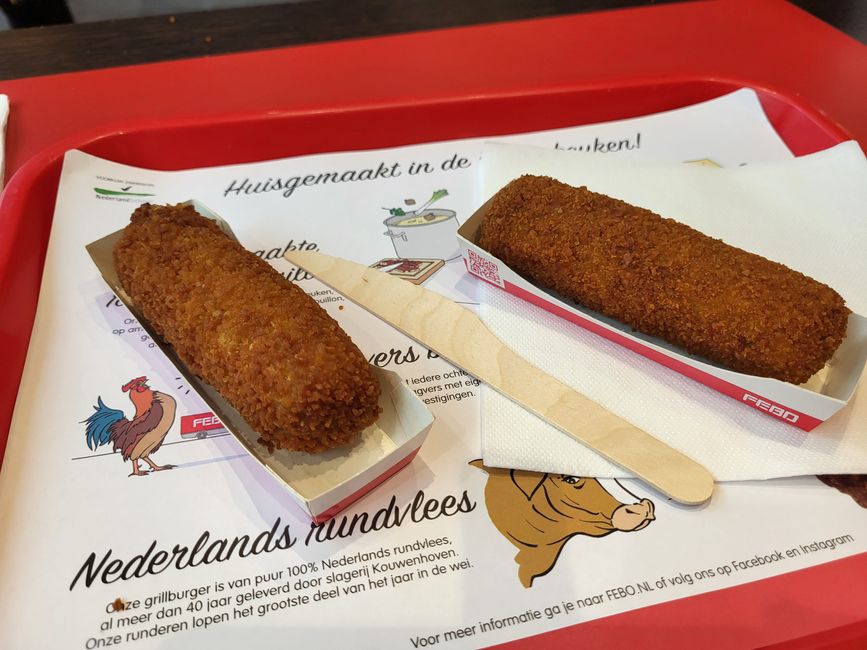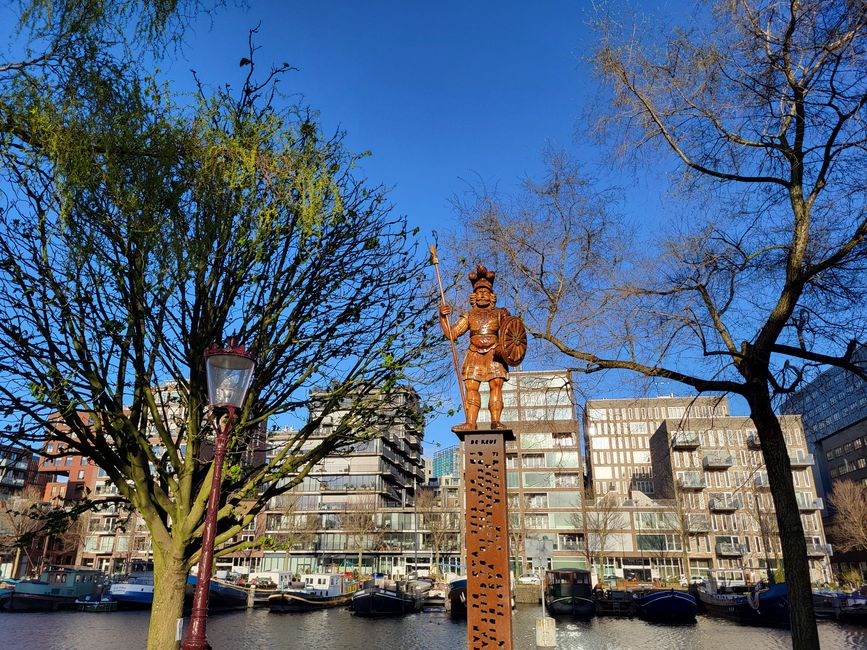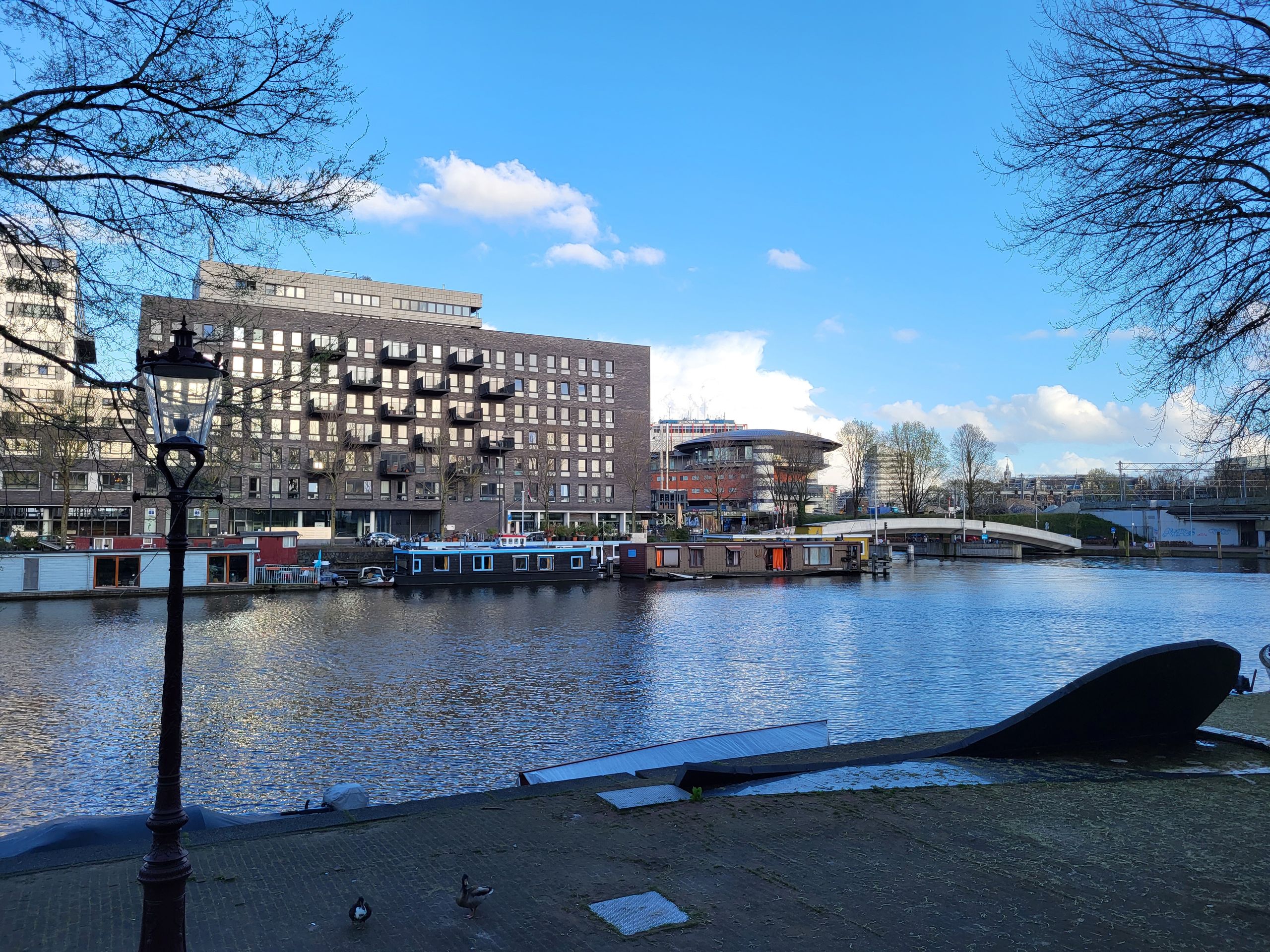Food Tour, Canal Houses, and Western Islands
Objavljeno: 12.04.2023







































Pretplatite se na bilten
To learn more about Amsterdam's history and life here, we signed up for a free city tour in the morning.

It started at Dam Square, where our friendly guide welcomed us in German with a charming Dutch accent.

We learned that about 20 men drown in Amsterdam's canals every year because they are drunk and trying to relieve themselves. Some cars have also sunk, which is why insurance companies have placed iron bars along the parking spaces bordering the canals, in order to pay less for damages. Since the Dutch seem to value their cars more than men, these bars are low enough to prevent a car from falling into the canal, but not a person...

We also visited the Begijnhof with the group. Until 1971, Beguines lived here and to this day, only women are allowed to move in.

It is very quiet in the inner courtyard of the houses, apart from the many tourists who come to see it.

After the tour, we headed to the Canal Museum.

The historic canal house on the Herengracht houses a multimedia exhibition on Amsterdam's urban development and the canals.

The canal houses are built on long wooden piles to prevent them from sinking into the swampy ground. In the past, these piles were only 8 meters long and too short, which is why many houses now need renovation and stabilization.

The Herengracht, with its large houses, is a very popular residential and business area. Our guide showed us a house that rents for over 16,000 euros per month for its 500 square meters.

Afterwards, we wanted to visit another historic house.

However, when we arrived at the Van Loon Museum, we found that most of the permanent exhibition, which showcases the historical interior of the building, was not accessible.

It was covered by black curtains, which served as background for a temporary exhibition on colonial history and its impact to this day.

Since it was already afternoon, we headed to the south of Amsterdam for the Food Tour with the I Amsterdam Card.

During the tour, we read information about various specialties in a PDF document and went from shop to shop.

After trying Dutch croquettes (fried and filled with meat), we moved on to Surinamese cuisine, which we also enjoyed.

Then we tried smoked meat at the Israeli snack bar, Mezzane.

The shops and stalls were located on a street with a long market. There was also fish, which attracted the herons perched on the roof of one of the stalls and the balcony above it.

However, the suggested fish shop was a disappointment: the staff simply ignored us and didn't want to sell us anything. Since we were already quite full, we moved on to the sweet treats:

Poffertjes were a must-try.

The waffle stand was unfortunately closed, but we later found another way to try one of the stroopwafels.

Finally, we ended the tour with a bag of fries with mayonnaise, onion cubes, and peanut sauce, which seems to be commonly eaten with everything here. (One of the croquettes from the first stop was also filled with it.)

Satisfied, we visited Huis Willet-Holthuysen, a residential house that can be visited with a large part of its original furnishings.

Afterwards, we wanted to visit the Old Church, but it was closed because a new exhibition was being set up.

We took our evening walk on the western islands.

The residential area is not far from the central station.

Here, it is significantly quieter.

Modern and old houses alternate here.

However, the walk, which led us through three islands, was only 2 kilometers long.

Pretplatite se na bilten
Odgovori

Izvještaji o putovanjima Holandija

